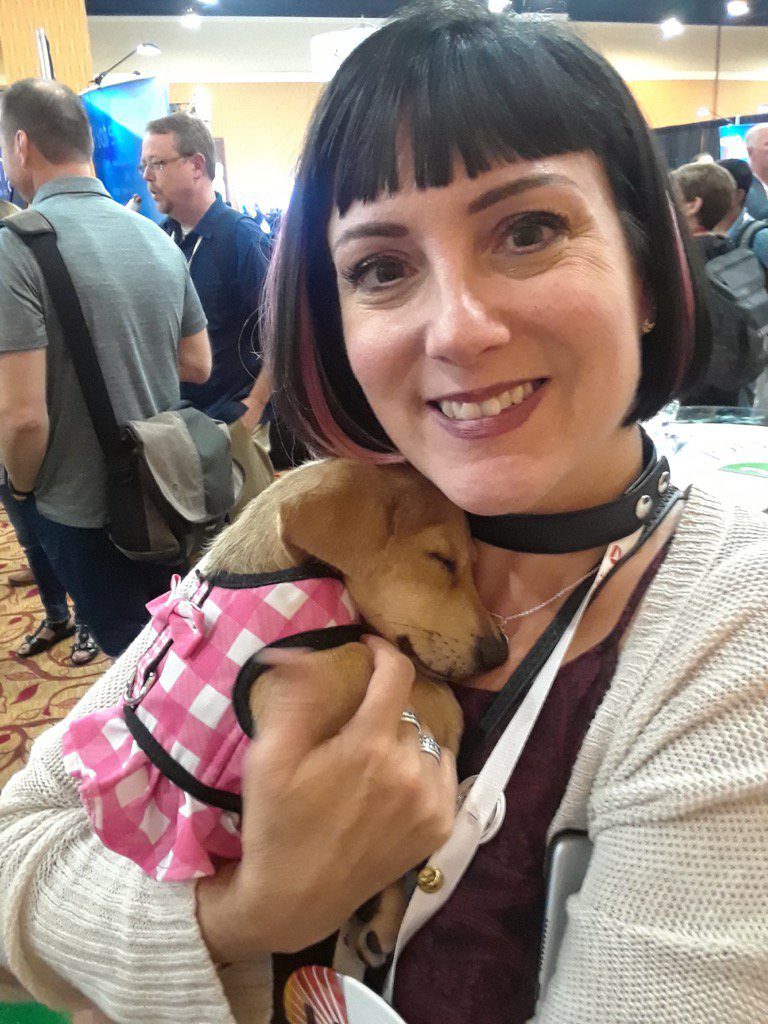Path to Better Presentations
I know you’ve read the title and are thinking, “Great, I’m going to learn how to write better presentations!” The truth is, it’s about how conferences do call for papers timelines, abstracts, as well as how we manage our content.
Timing Is Everything
In recent years, there’s been a scramble to get on the schedule for the best speakers. I remember when I first started as the director for RMOUG’s annual Training Days conference. I had to keep the opening date for Call For Papers, (CFP) secret, since the moment I opened the portal up, IOUG, ODTUG and UKOUG were sure to pounce- all focused on getting on the limited travel agendas for top notch conference speakers.
This resulted in these events having the CFP abstract content submitted 6-10 months before the event. Speakers would have no choice but to submit repeat, vague or incomplete abstract submissions, which invariably impacted the quality of what was presented at the event. I know a number of speakers are sitting back and saying, “Wait a minute…” but let me finish. The way the quality was impacted was in various ways and not in the way many would first consider:
- The subject topic may have changed drastically from the content presented due to new features and releases.
- The speaker may have changed roles, moved to a new product or company, impacting the ability to present at the level they would like.
- Time has changed the message or solution in the presentation, offering a great presentation, but the summary in the session catalog doesn’t reflect this, resulting in poor attendance.
First Isn’t Always Good
As I know RMOUG is about to open our CFP, part of me is torn on the way we always do this. One one hand, we want adequate time for people to submit abstracts, for our reviewers to have adequate time to review the content and that our scoring system is everything to our acceptances, but….but….. if I were to ensure I have the BEST content, what are some of the enhancements I’d want in place that I know as a speaker would significantly help?
- Separate speakers into three categories-
- Seasoned: Oak Table, ACE Directors and ACE Alumni, Product Managers from Oracle, etc.
- Desired: ACE and ACE Associate, Common Local Speakers, New Speakers to RMOUG, but have previous experience speaking.
- New Speakers: As the role demonstrates- First time speakers for any time event and customer presentations.
- Group 1 would submit a request to speak and let us know the title and summary of their talk but could leave it very high level. They would be scored on the presentation and speaker quality, then offered one slot with a max of two available in our schedule. They would have to have their final abstract and summary available with their slide submission. The speaker submitted MUST be the speaker at the event and we expect the abstract and content to match very closely due to the considerations that were offered.
- Group 2 would go through our standard scoring process and have to submit a title, abstract and summary and show previous blog posts/white paper displaying knowledge of the content. This group would have a more lenient window on their slides, as we know the content may look a bit different than the abstract.
- Group 3 would be offered an opportunity to submit through the standard scoring process, but would mark themselves as new speakers. They would be contacted to review their abstract and decide if we have an opportunity to fit them in the schedule. The dependency would be on the quality of the abstract topic and the amount of guidance they would require to follow through to present.
The goal of this change would be to:
- Offer the flexibility needed by seasoned speakers and those heavily dependent upon releases/NDAs to offer the newest material to our audience.
- Help guide those in maturing their speaking skills to work towards the next level.
- Introduce more new speakers into the community and offer more interaction to them in the abstract review process than we offer in the current one. By eliminating some of the complexity for the seasoned presenters, we’re able to reallocate that time to the new speakers.
- Hopefully shorten our CFP and review process, which means we could push out our CFP dates to later in the year.
Fix the Software
“A good presentation is like a good whisky. Proper aging is important.”
The first time I give a presentation, I’m rarely happy with it. I want my messaging on fleek and it just rarely occurs where the story, the content slides and my brain has it all wrapped up tight. It seems I can go through it a 100 times before I get up on stage, but as I start presenting the material in front of audiences, the story comes together and this often creates a need to update the abstract.
Maybe its the control freaks in us on the database side of the house. Once our CFP is done, we lock down access for potential speakers to tweak anything. I don’t know about any other speakers, but as I submit throughout the year, I keep a running document of my abstracts. I tweak them as I go along and there are many times I’d like to update the ones I’ve already submitted as the talk “ages” and takes shape. I fall into the 50% of speakers that build a lot of content each year and this means I often show up at an event and realize the title I submitted hasn’t changed in the last 9 months, but the message has mutated with my experience giving the session and the summary that should draw the folks into the session just doesn’t match any longer.
It would be AWESOME to have abstract software that allows you to tweak your abstract and submit it to the conference director for seasoned speakers. We want to give the audience a great presentation, but I know at KSCOPE, my abstract was written 10 months before the conference, before I understood the power of what Delphix could do and if you read the summary in the catalog, no way I was reaching my real audience.
Profiles
I *thought* I was really great at keeping track of all my profiles out on the internet. I get very frustrated when I can’t update them when I move to a new role or a new company and as much as some folks might tease me about moving around, the truth is, if you want to be a mover and a shaker, we’re often left with no choice but to move to shake it up. 
I was completely confounded when someone told me that I had a profile that said I was an ACE Director still and that they had to go in and have it updated. I was sure they’d made a mistake and just missed the “alumni” behind it. I’m very good about ensuring I always copy and paste my biography from my document that I keep my abstracts in. I logged into the portal that was listed as the culprit and quickly noticed that is didn’t have my default “pasted” profile. It also listed my title with the word, “new” in front of it. It told me that for some reason, I’d attempted to edit instead of copy and paste over and it proved to me again that taking short cuts like this, no matter how benign they can seem just shows how easy human intervention causes human error. I had broken my own rule of editing a profile by hand and had paid for it.
For conference speaker bios, can we PLEASE, just link to speaker’s Linkedin profiles? We use bind variables in our code, so why would we have hard coded values for data that can change like our own information? It seems like a petty thing, but I can’t tell you how many times I’ve received emails asking me to update profiles that I don’t have access to or how it’s confused folks with out of date information that I can’t pin down the owner of.
Your Part as the Speaker
So what can I offer on becoming a better speaker? A few its of advice:
- Find out who your audience is. Ensure your session speaks to them, resonates with their problems and provides them with a solution.
- If the audience is on the edge of your technology, locate someone in the midst of their technical landscape and ask if they’ll co-present with you, (it’s what I should have done at KSCOPE again this year… :))
- Keep a running doc of your abstract titles, summaries, abstract, (400 words is standard) and at least three take-aways from each session. Keep it updated throughout the speaking year and remove old ones as they age out.
- Follow the event on Twitter and find out what topics are hot buttons, (and buzzwords, yes buzzwords…)
- Before attending, send linked in connect invitations to each speaker, (that you aren’t already connected to) and follow other speakers on Twitter whenever possible.
- Reach out to the conference managing company, event coordinator, etc. and ask if there are any volunteering that is needed, (how can you help.) Many events rely on volunteerism to survive and the help you offer can assist in the event continuing each year. It will also foster more networking, which is so very important to career and community.
- Practice in front of the mirror, in front of peers who know the technology, (advice I need to take more often, sucks to be remote, so don’t be too hard on yourself… :))
OK, time to fly home and face the music. Esme wants to know why I was cuddling another puppy at the KSCOPE puppy therapy circle in the exhibitor area two days ago. Look how happy the puppy was though! 🙂


